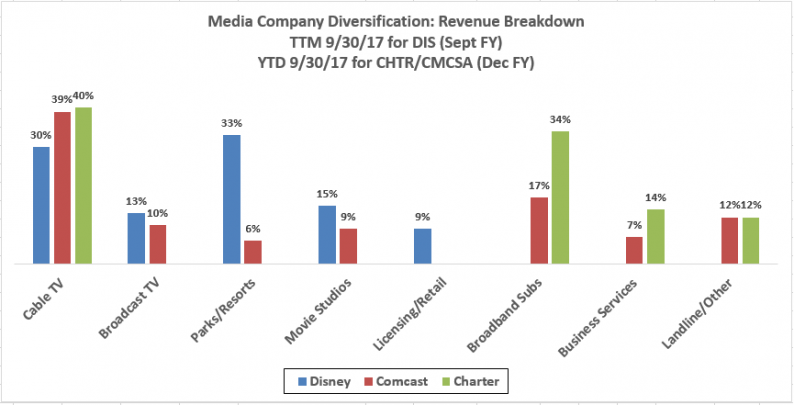A client reached out to me after reading my past post regarding the media industry landscape to point out that Comcast and Charter, while both in the business of providing video, data, and voice services to customers, are far from equal when it comes to revenue diversification.
This is a point that is certainly true. I probably should have been more specific in my prior post that my comments were meant to be focused on the TV business. With Comcast’s NBC Universal acquisition about eight years ago, the company became far more than just a cable company offering triple play packages to mostly residential customers.
Along those lines, Charter is a far more one-sided investment bet than Comcast is these days, and would be more susceptible to people who are cancelling their cable service and instead opting for Netflix and/or Prime Video.
Since these companies, along with Disney, have various business segments, I thought it would be helpful to illustrate where each gets its revenue from. The answers are a bit surprising.
Below is a chart that shows the percentage of total revenue that each media company gets from various businesses. Since Disney’s 2017 fiscal year is already over, I am showing data for their latest 12 months. For Comcast and Charter, only the first nine months results for 2017 are publicly available.

In my mind, there are a few notable things about this data:











Leave A Comment